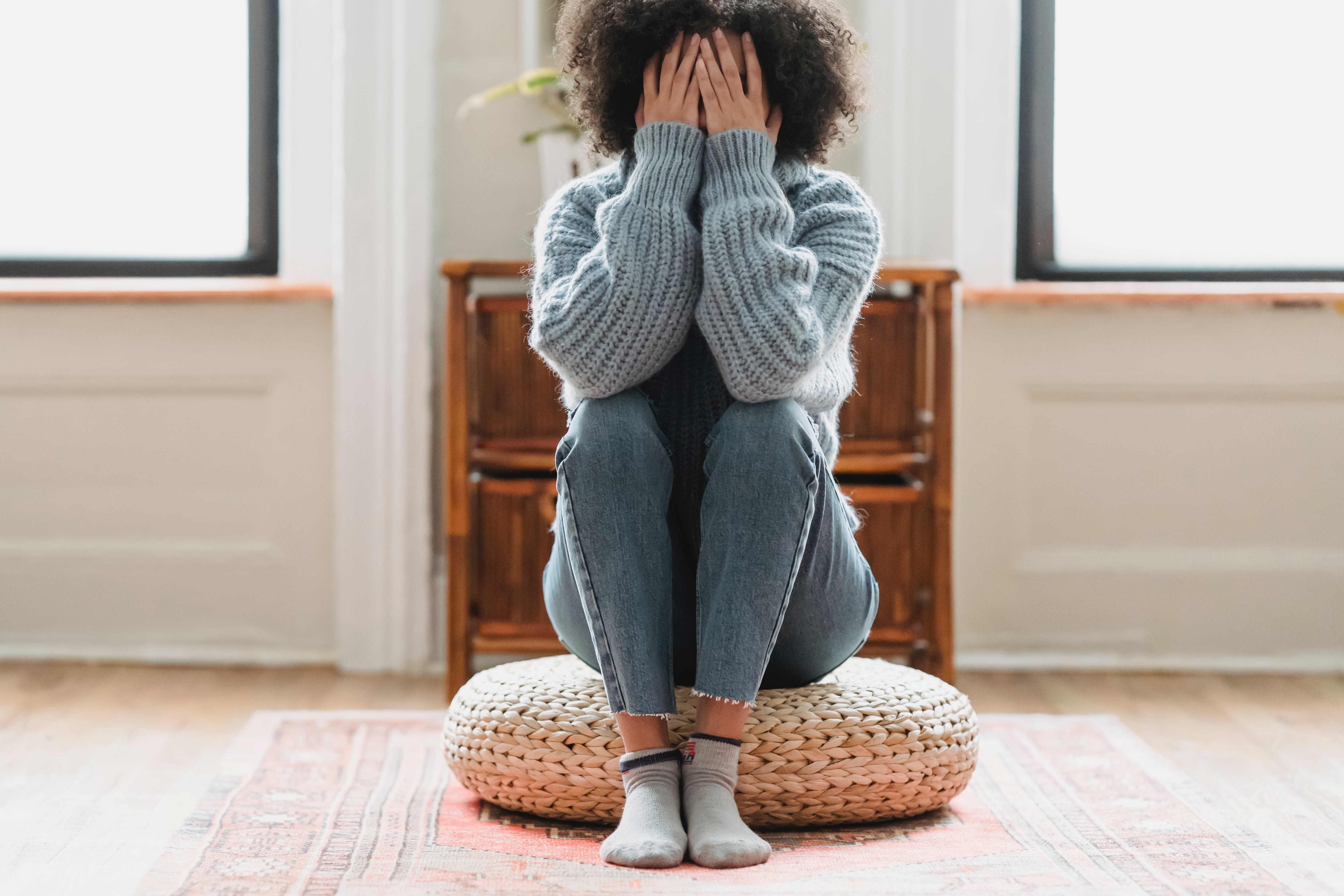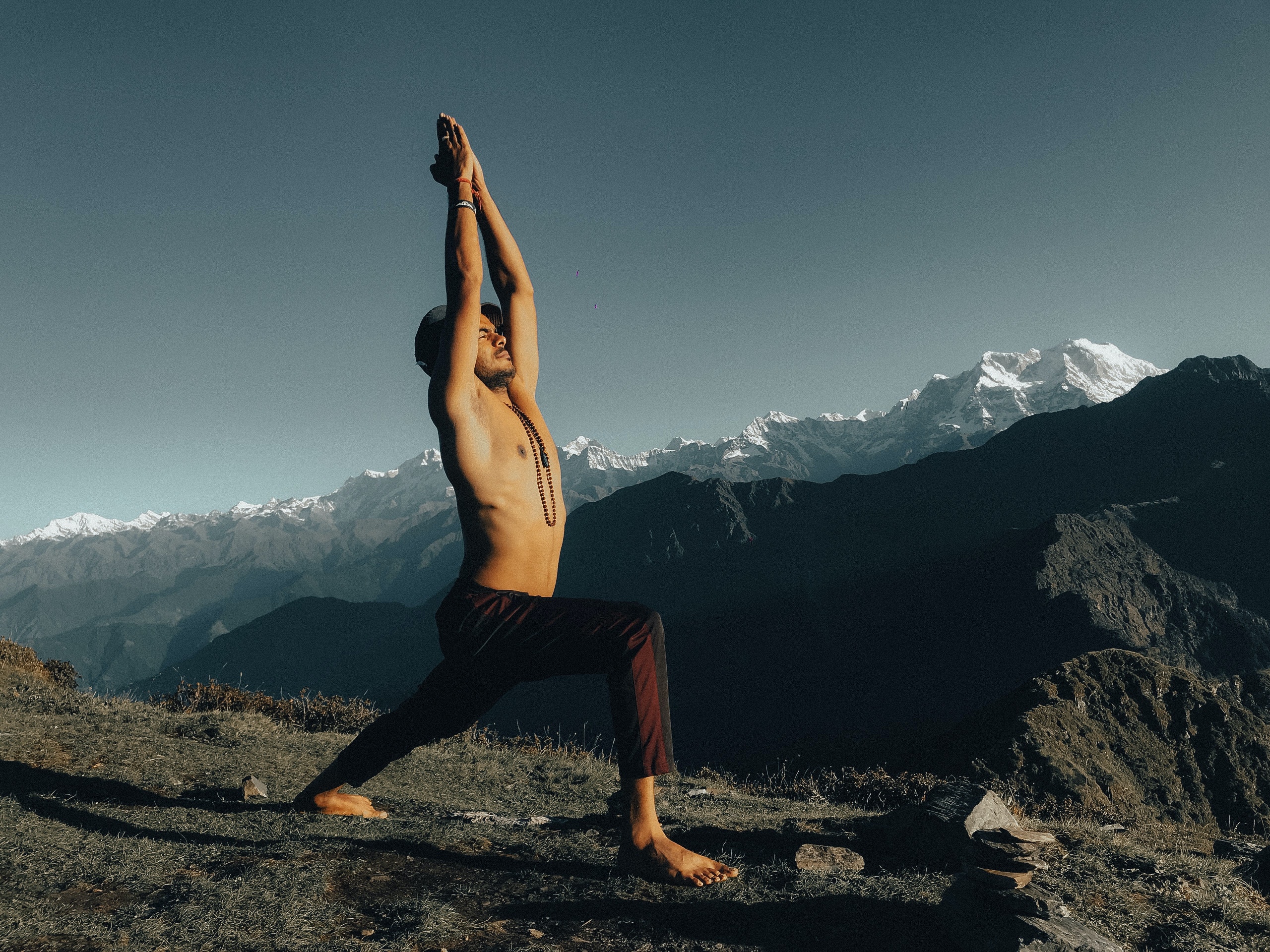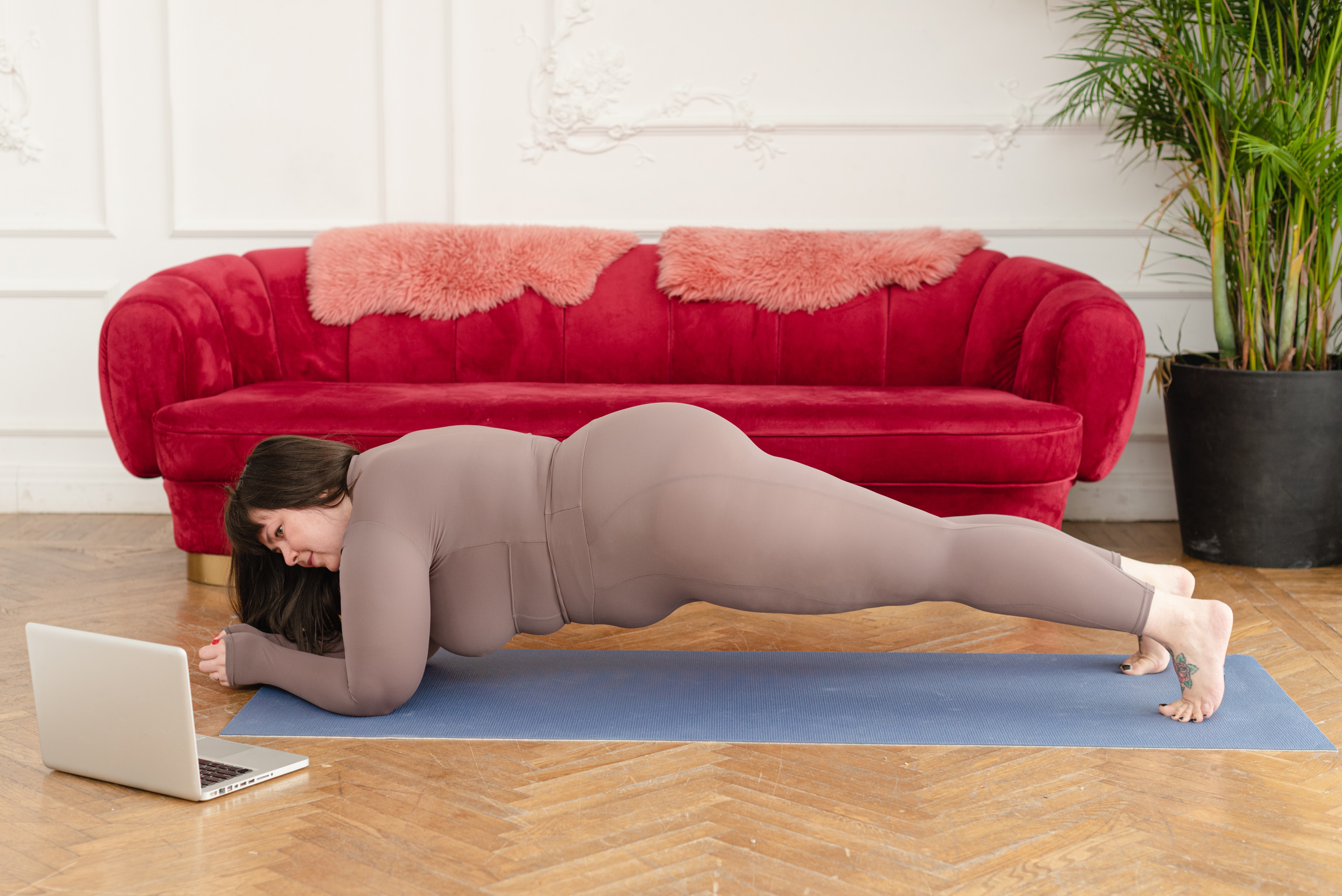My first yoga class was not the most auspicious start to a yoga practice.
With my interest in martial arts, I thought it might be good for improving my kicks and flexibility. Yoga is basically a group stretch, right? So I saw no problem with doing an intense workout in the gym downstairs beforehand.
Fully warmed up after a 45-minute workout, I turned up to class ready to re-lax.
This was an effective way for me to learn how physically and mentally demanding yoga can be. It required far more energy and attention than I’d anticipated. For the first time in a long time, there were things I couldn’t do.
And with the focus on breathing and movement, it was also far more stimulating, interesting, and intriguing than I’d expected.
To avoid future exhaustion and face-first collapses, I’ve refrained from working out before yoga since. However, I regularly return to what I learned in those early classes and the way I felt afterward.
As — it would seem — do many people.
Yoga appeals to all kinds of people who begin practicing yoga with the hope of enjoying numerous benefits. It can improve your kicks, sure – but it can do many other things for you as well.
Here are some of the reasons for yoga’s increasing and enduring popularity.
1. Yoga Has Scientifically-Proven Benefits
It’s worth noting that many of these benefits not only have anecdotal evidence but also hard scientific evidence based on research and experiments.

Yoga has been through many guises and transitions. There have been numerous forks in the road. But, on the whole, yoga has never been more popular in the West than it is now.
One of the reasons for its resurgence in modern times (in the West) is that the scientific community started taking yoga’s health benefits seriously.
The National Institutes of Health’s assessment of articles about the therapeutic effects of yoga found that yogic practices could enhance “overall wellbeing and quality of life,” as well as:
- Enhancing muscular strength
- Improving body flexibility
- Improving cardiovascular and respiratory function
- Reducing stress, depression, anxiety, and chronic pain
While more study is required, Johns Hopkins Medicine gives scientific evidence that suggests that yoga can help people:
- Improve their sleep quality
- Boost energy levels and moods
- Ease arthritis symptoms
- Develop healthier attitudes to food
- Improve heart health
- Prioritize self-care
- Get relief from back pain
- Manage stress
- Improve mental well-being
There are many esoteric, spiritual, and abstract considerations surrounding yoga. Some of them are true. Some of them are nonsense. But being backed by hard science helps give the physical, emotional, and psychological aspects of yoga practice a baseline of credibility for skeptics and enduring appeal for new waves of practitioners.
2. Yoga Connects the Mind and the Body
Yoga practice is more than exercise. And it’s more than meditation. It can have clear and significant physical benefits, but it also improves minds and moods.
Its ability to tap into these various areas of our lives is part of what makes it so powerful and appealing.
Asanas, such as tree pose, can certainly improve our physical balance. But we also achieve more holistic benefits when we reduce any wobbliness by focusing on one spot, while being mindful of our breath, and conscious of the way our bodies feel as we attempt to hold this pose or transition to and from another.
Yoga’s focus on the breath helps connect the mind and the body, making it much more interesting, powerful, and effective than an ‘exercise.’
3. Yoga May Reduce Stress, Anxiety, and Depression
We’re living in hard times. Modern life piles on the pressure with exams and work performance, career advancement, kids, and balancing it all. And you need a six-pack. In the West, the cost of living (yes, the inherent cost of existing), is rising. Food and fuel are increasingly scarce and more expensive. I’m feeling stressed just writing about it.

According to Forbes Health, about one in five adults in the US received mental health treatment in 2021. While this figure appears to be on the rise, a survey suggested that nearly half of US adults could not afford the treatment they needed for a diagnosable condition.
Covid-19 didn’t help, either. The estimated prevalence of depressed people in the world, which was about 193 million, grew to around 246 million following the pandemic. The estimated prevalence of anxiety disorders grew about 25%, from around 300 million people pre-pandemic to about 375 million post-pandemic.
It’s no wonder that a practice that can help reduce stress, anxiety, and depression is popular.
And it’s not that people are necessarily drawn to yoga because they want to deal with stress, anxiety, or depression. They may not even know they are depressed. For many people, yoga’s mood-lifting ability is a side effect or a bonus that keeps them coming back.
4. Mindfulness
Related to the reduction of stress, depression, and anxiety, but worthy of its own section, is mindfulness. You don’t need a diagnosable mental health condition to come to love mindfulness.
Mindfulness is an antidote to a lifestyle that’s like a rollercoaster running out of track. There are so many distractions from the moment. Social media, TV on demand, and podcasts can all be enlightening and enjoyable, but they tend to take us out of the moment, almost as if the moment we’re in is without value unless we’re heightening it with multiple activities.
Their yoga practice is one of the few times that people find themselves in the present, which is why yoga sometimes triggers emotional release that takes practitioners — but not their instructors — by surprise.
5. Sleep
Getting healthy amounts of quality sleep is one of the best things you can do for your body and mind. And yoga can help.
Like yoga, healthy sleep can contribute to improved mood, cardiac health, and stress relief. It’s a vital component of any healthy routine.
But it’s not just about getting more hours of shuteye - it’s also about the quality of that sleep. Better quality sleep includes factors like faster sleep onset (falling asleep more quickly) and fewer disturbances that would disrupt your REM cycle.
For instance, a study on the impact of yoga on the sleep and life quality of the elderly, the asanas (poses) stretch and relax the muscles and improve breathing, which in turn leads to “less sleep latency, more deep sleep, less sleep disturbances, and better sleep efficiency.”
6. It Looks Good
I just deleted “manage back pain” and “improve posture.” Sure, yoga can help with these things, too, but that’s not why it is so popular.
Note that I didn’t delete “it looks good.”
It might not be the best reason to do yoga, but if looking good helps people reap the other physical and mental benefits of yoga, how much of an issue is it?

One of the great things about yoga is that it’s for anyone and everyone. There are ‘idealized’ images out there, but we know that not everyone has a mountaintop to balance on.
Yoga requires comfortable clothing. Whatever you’re wearing, whatever your shape, if you’re entering into your yoga practice with all your attention, that’s a good look.
7. You Can Adapt Yoga to Any Body
It’s challenging to be a sumo wrestler if you’re thin. You might struggle to compete as a racing jockey if you’re tall.
Practicing yoga, however, is not limited by age, gender, or body type. For those with injuries or reduced mobility, there is chair yoga. There’s yoga for seniors and there’s yoga for kids. Many asanas have variations that can make them achievable for each practitioner, according to their flexibility, strength, and experience level.
Whether you want to build strength, flexibility, or balance, you can find what you need in yoga. Its adaptability means that it has an all–around appeal that attracts multitudes.
8. It Doesn’t Cost Much to Do Yoga
Unlike many other hobbies, you don’t need to buy a single item to practice yoga. All you need is comfortable clothing, somewhere to practice, and a little time. A yoga mat makes things more comfortable, but you could use any kind of mat or rug that is not liable to slipping.
Grab a cushion from a couch or a pillow or bolster from your bed to provide support when you need it. Use a book in lieu of a block — just don’t tell the author.
With DoYogaWithMe, you also get hundreds of free yoga instruction videos from world-class instructors.
9. Celebrities Love It
According to Earthweb, there are currently around 300 million yoga practitioners worldwide. Some of them are celebrities.
Seeing high-profile celebrities doing things can raise the temperature of a trend for the global community. When celebrities do yoga, it can’t help but attract people to the practice.
For better or worse, the celebrities that have popularized yoga in the West include:
- Madonna
- Shilpa Shetty
- Lady Gaga
- Jessica Alba
- Jennifer Aniston
- Matthew McConaughey
- Reese Witherspoon
- Miley Cyrus
- Ryan Gosling
- Tom Hanks
- Beyonce
- And Iron Man (aka Robert Downey Jr.)
When a muscular Emily Blunt rises into upward-facing dog in Edge of Tomorrow (a body double is doing peacock pose a few seconds earlier), she may have inspired many people to start or get back to their yoga practice.
Yoga mats were no doubt removed from the tops of wardrobes, dusted, and unrolled.
While the emphasis is often on physical appearance or the “hottest fitness trends” — that’s Western media for you — celebrities who do yoga can influence us and so they’ve had something to do with yoga’s popularity, too.
The popularity of posture-based yoga most people in the West recognize as yoga today surged in the 1980s, alongside the rise of the fitness industry, VHS, and DVDs.
10. Yoga Pioneers Paved the Way
The introduction of yoga to the West is typically traced back to Swami Vivekananda in the 1890s. While some criticize his approach and ideas, he nonetheless kickstarted the adoption of yoga ideas and practice in the US.
Since then, many pioneering figures spread the word and helped to popularize yoga, including, but by no means limited to:
- Theos Casimir Bernard - an explorer and author, known for his work on yoga and Tibetan Buddhism.
- Indra Devi - formerly known as Eugenie Peterson, Devi was a pioneer of yoga as a form of exercise and yoga for stress relief in the US.
- Richard Hittleman - an American yoga teacher who was one of the first people to create a yoga-based TV series, Yoga for Health.
- Ram Dass - formerly known as Richard Alpert, this Harvard professor went on a pilgrimage to India and returned with a new identity and the beginnings of his classic book on spiritual awakening, Be Here Now.
11. You Can Do It at Home and Online
Convenience makes yoga a welcome retreat for people in a fast-paced modern world. You don’t have to go to group classes at a fixed location at a fixed time in order to enjoy yoga.
All you need to do yoga at home is you, a little room for the asanas, and five minutes.
Throw in a yoga mat and things get more comfortable. Add in video instruction via a laptop or a smartphone and you can be guided through a yoga practice of your choice with a top instructor.

If you’re not feeling particularly motivated or mobile, if you want post-run yoga in the comfort of your home, or if you just want ’I don’t-feel-like-leaving-the-apartment-today’ yoga, there are customized classes waiting for you online.
Accessible and Powerful
People have been very influential in making yoga popular. It’s normal that they would want to share something that has made a strong, positive impact on their lives.
The best advert for yoga, however, has been yoga itself. Its adaptability to our needs, its many benefits for the body and mind, and its ability to help us connect the two have led to everything from better well-being to deep, transformative experiences for yoga practitioners all around the world.



Comments
Existing Comments